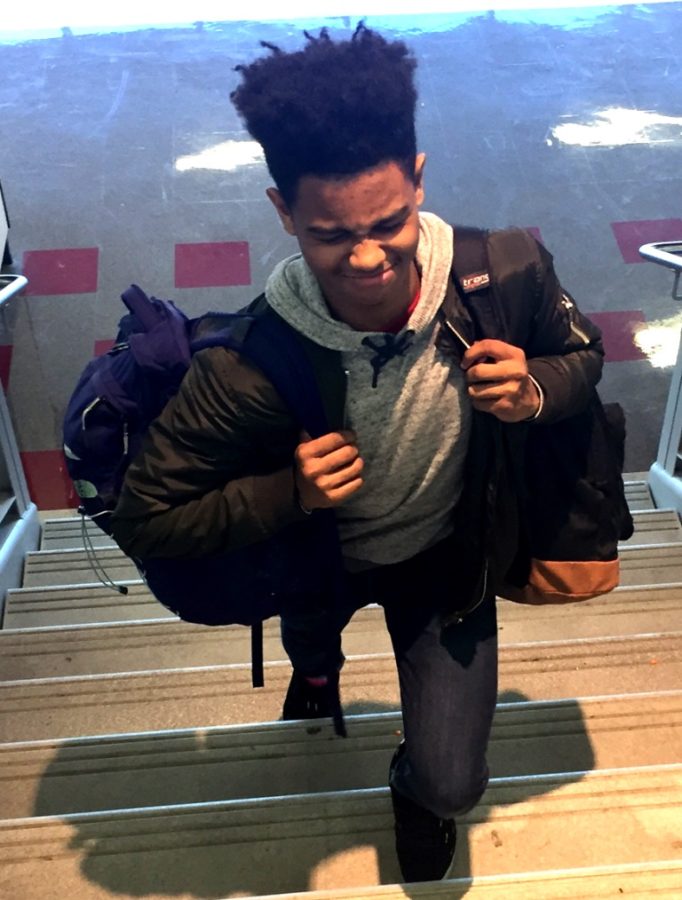The Pressing Backpack Question: One or Two?
Shouldering the Load: Senior Shemar Williams embodies the struggle of so many of his North Atlanta peers who have two backpacks for each block day.
Block schedules, or as North Atlanta High School students know them, A and B days, can be both a blessing and a curse. Here’s the blessing part: Procrastination on homework is actually very much in order since — you know the drill, kids — you won’t have the same class tomorrow. The teachers change every other day, breaking the monotony somewhat. But, on the other hand, classes are very long, and that same monotony is exacerbated. Not to mention it’s too easy to misplace your belongings.
Following a break, everyone always hears the excuses. “I forgot my A day bag.” “I left my B day stuff at home.” “I forgot to switch out my books.” Somehow, it always happens and the reasons are often legitimate, regardless of whether the teacher is sympathetic or not. That’s because there are two strategies students use to keep track of their things, and both strategies have their drawbacks.
Some students use the same backpack, but merely replace their books depending on the following designated block day. This can be problematic because if these books aren’t switched out, the student is out of luck. And there’s always the nagging feeling that you have to remember the critical task of switching books. At the same time, with this strategy everything is contained in a single bag, and there’s no need to keep track of two. Solitary items that aren’t necessarily constrained to one day, like a pencil pouch or a calculator, can be left in the bag with no worries. “It’s much less chaotic than the alternative,” said junior Gwyneth Smith.
Still, a fair amount of students keep two backpacks, one for each block “day.” This can prove difficult if the person is wrong about what day it is. Even simply keeping up with two giant bags full of binders and textbooks is a nuisance in and of itself. Additionally, the aforementioned “solitary” items must be continuously transferred between the bags, or else you won’t be able to write, do math or write down the math for the entire day.
But the two-bag strategy has some major positives, too. It minimizes the effort required to put the necessary books in your bag, and it’s not that much extra to do. Everything is harder to forget, because it’s right there in the bag already. “Besides, it’s not that hard,” said another junior, Nailah Willoughby. “It especially helps with my dual enrollment.”
In a random sampling of opinion it would seem that the one-bag strategy is the more predominant one. But — that said — the two-bag types are among us. As with note-taking, binder organization, and many other school-related matters, the “best” option depends on the individual student. And whether the Warrior go in the one or two bag direction, we know this: All North Atlanta students — like all teens everywhere — have plenty of baggage.











